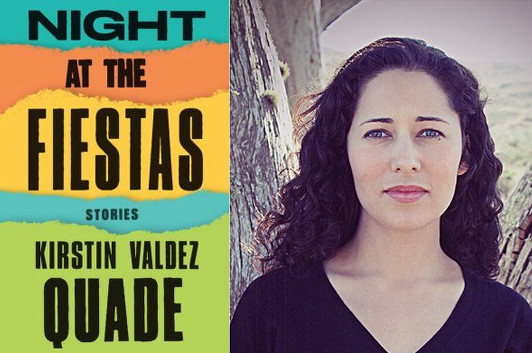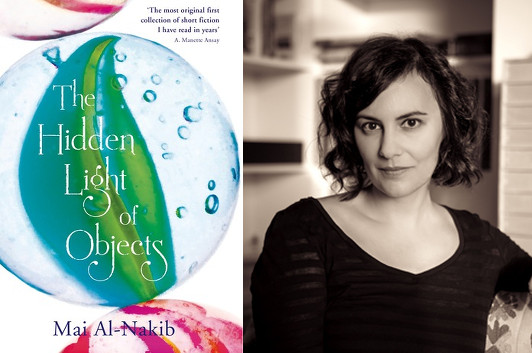Kirstin Valdez Quade on “Parker’s Back”

photo: Maggie Shipstead
“One of the themes I find myself returning to again and again in my fiction is faith,” Kirstin Valdez Quade says at the beginning of this guest post; indeed, one of the first things you’ll notice as you read the stories in Night at the Fiestas is the strong presence of religion, and religious pageantry, in her characters’ lives. So it’s not unexpected that she might turn to Flannery O’Connor when asked about the short story writers who’ve been an influence or inspiration to her—but it’s a delightful surprise to see that she’s singled out one of my favorite O’Connor stories to discuss.
One of the themes I find myself returning to again and again in my fiction is faith. As a child, I spent a lot of time with my very devout grandmother and great-grandmother, and I went to mass regularly. Northern New Mexico Catholicism is full of petitions and processions, home altars and lit candles and plaster saints on the mantle. It’s also the Catholicism of agonized depictions of Christ, His wounds gaping and bloody.
The Catholicism in Flannery O’Connor’s fiction is similarly gory. She specializes in petty, flawed characters, characters who nonetheless are drawn to transcend themselves. When they’re lucky, these characters, however unpleasant and undeserving they might be, are granted grace—though usually when grace comes, it’s violent and at the last minute. My favorite O’Connor story is perhaps “Parker’s Back,” one of the two pieces she was working on when she died. I love the story for its occasionally cruel humor, but also for its depiction of a faith that is ugly, uncomfortable, and deeply necessary.
O.E. Parker is a flawed man. He lives wildly, selfishly, likes his drink and likes his women. Parker repeatedly runs away from what he most needs—to be truly seen, by himself and by God. He can’t even bear to admit to his full name (Obadiah Elihue! Who could bear it?).
Yet Parker longs to transform himself and transcend himself. He covers himself from head to toe in tattoos, always seeking “a single intricate design of brilliant color…an arabesque.” Still, every tattoo disappoints, and that unity of self eludes him. His anxiety only increases, until there is only one place left uncovered: his back.
Inevitably, “dissatisfaction began to grow so great in Parker that there was no containing it outside of a tattoo,” and he takes off once again for the city, in search of the tattoo that will unify him.
15 February 2015 | selling shorts |
Mai Al-Nakib Looks at Men in the Sun

photo: Omar Nakib
One of the persistent themes in Mai Al-Nakib’s short story collection, The Hidden Light of Objects, is the way that we use stories to shape our own lives and identities, a common thread across decades and borders. Though her stories are not fantasies, there’s a slight trace of the surreal to them, especially early on, as if naturalism were given the tiniest of nudges. In this guest essay, Al-Nakib tells us about another Middle Eastern writer whose visionary prose has helped shape her own.
Ghassan Kanafani was an artist before he was a writer. This shows in his writing, which privileges vision above all the other senses.
I came to Kanafani late. I was a graduate student when I first read Men in the Sun. The sparseness of his language struck me, but I didn’t really notice the visual aspect of his style. Perhaps it’s because I was busy reading for content, overwhelmed by the political weight of his words. I remember the heat of a strange guilt rising up my neck as I learned that the three Palestinian men, who would die together in an overheated water tank, were desperate to be smuggled across the desert into Kuwait. Kuwait—that’s where I’m from. It turned my mouth sour to read those famous last lines of the story, “Why didn’t you knock on the sides of the tank? Why didn’t you bang the sides of the tank? Why? Why? Why?” The first time I read Men in the Sun—a short novella or, as I prefer to think of it, a long short story—I was busy feeling the anguish Kanafani no doubt wanted his readers to feel, anguish over a lost cause, over wasted, wretched lives, over betrayal and corruption and injustice. In the depths of that anguish, however, I overlooked what I now see as Kanafani’s characteristic visual aesthetic.
Let me give you an example. In a scene in the second chapter, one of the three men who will die in the sun, Assad, is negotiating with a smuggler who folds yellow papers as he “look[s] up at him from under his heavy eyelids.” Those yellow papers seem innocuous and we pass over them quickly, reading on to learn whether Assad will fall into the trap of this lizard-eyed man. But the narrative slips from the present scene into Assad’s recent experience with another cheating smuggler, who had tricked him into trekking across the desert into Baghdad on foot, when he had initially promised to take him there by lorry. The yellow papers transform into “yellow slopes” of desert:
“He crossed hard patches of brown rocks like splinters, climbed low hills with flattened tops of soft yellow earth like flour. […] The horizon was a collection of straight, orange lines, but he had taken a firm decision to go forward, doggedly. Even when the earth turned into shining sheets of yellow paper he did not slow down.”
9 February 2015 | selling shorts |

 Our Endless and Proper Work is my new book with Belt Publishing about starting (and sticking to) a productive writing practice.
Our Endless and Proper Work is my new book with Belt Publishing about starting (and sticking to) a productive writing practice. 
